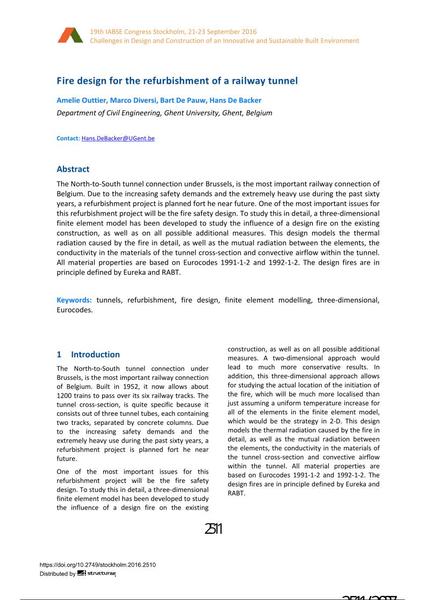Fire design for the refurbishment of a railway tunnel

|
|
|||||||||||
Bibliographic Details
| Author(s): |
Amelie Outtier
(Department of Civil Engineering, Ghent University, Ghent, Belgium)
Hans De Backer |
||||
|---|---|---|---|---|---|
| Medium: | conference paper | ||||
| Language(s): | English | ||||
| Conference: | IABSE Congress: Challenges in Design and Construction of an Innovative and Sustainable Built Environment, Stockholm, Sweden, 21-23 September 2016 | ||||
| Published in: | IABSE Congress Stockholm, 2016 | ||||
|
|||||
| Page(s): | 2511-2518 | ||||
| Total no. of pages: | 8 | ||||
| Year: | 2016 | ||||
| DOI: | 10.2749/stockholm.2016.2510 | ||||
| Abstract: |
The North-to-South tunnel connection under Brussels, is the most important railway connection of Belgium. Due to the increasing safety demands and the extremely heavy use during the past sixty years, a refurbishment project is planned fort he near future. One of the most important issues for this refurbishment project will be the fire safety design. To study this in detail, a three-dimensional finite element model has been developed to study the influence of a design fire on the existing construction, as well as on all possible additional measures. This design models the thermal radiation caused by the fire in detail, as well as the mutual radiation between the elements, the conductivity in the materials of the tunnel cross-section and convective airflow within the tunnel. All material properties are based on Eurocodes 1991-1-2 and 1992-1-2. The design fires are in principle defined by Eureka and RABT. |
||||
| Keywords: |
refurbishment finite element modeling (FEM) fire design tunnel Eurocodes three-dimensional
|
||||

